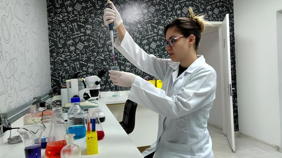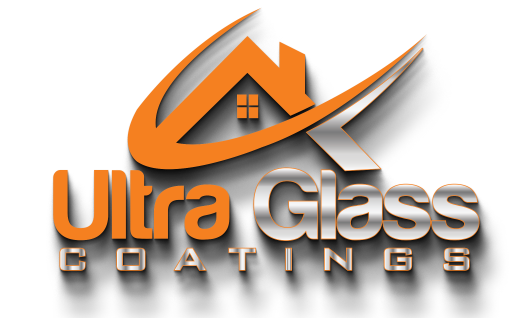Home > Press > Low-cost formulation reduces dose and increases efficacy of drug against worms: Praziquantel, usually administered in large tablets, is the only anthelmintic available on the market. New form of presentation uses nanotechnology and facilitates use by children and pets
 |
| Ana Mengarda conducts a test at the Research Center for Neglected Diseases (NPDN) at Guarulhos University: a low-cost solution increases the efficiency of the drug against worms
Credit Mrio Salvador/UnG |
Abstract:
A group of researchers supported by FAPESP has developed a new formulation for the only drug available on the market to treat helminths, as worms such as schistosomes and tapeworms are known. According to the World Health Organization (WHO), 400 million people worldwide suffer from these worms.
Low-cost formulation reduces dose and increases efficacy of drug against worms: Praziquantel, usually administered in large tablets, is the only anthelmintic available on the market. New form of presentation uses nanotechnology and facilitates use by children and pets
So Paulo, Brazil | Posted on May 16th, 2025
Praziquantel is sold in large tablets that are difficult to swallow, especially for children and pets such as cats and dogs, which are also colonized by helminths and require preventive treatment. The drug also tastes bitter, which also makes it difficult to administer.
The new, nanotechnology-based formulation is water-soluble and more efficiently absorbed, requiring half the usual dose to achieve the same effect as a tablet. A patent application has been filed for this innovation.
The results were published in ACS Applied Nano Materials, a journal of the American Chemical Association.
Neglected tropical diseases, such as worms, are lacking in treatment innovations, mainly due to the industrys lack of interest in investing in drugs for poor populations, who are the most affected by these ailments, says Josu de Moraes, who heads the Research Center for Neglected Diseases (NPDN) at Guarulhos University (UnG) in the state of So Paulo, Brazil.
Even though praziquantel was created more than 40 years ago, it is 75% to 95% effective. As creating a new drug takes a lot of time and investment, we thought of this low-cost, incremental innovation, which improves absorption by the body and acceptance by children and pets, adds the researcher.
The study is part of the project Selection of drugs with anthelmintic activity, nanoencapsulation and pre-clinical evaluation in an experimental model of schistosomiasis, supported by FAPESP.
The first author of the article is Ana Carolina Araujo Mengarda, who has a PhD scholarship at the Biomedical Sciences Institute of the University of So Paulo (ICB-USP).
After developing the product in collaboration with researchers from the University of Brasilia (UnB), the UnG researchers conducted a series of tests, both directly on the parasites and on animal models and mammalian cells.
The tests showed low toxicity of the formulation in cells other than those of the parasites. Also in these preliminary analyses, the new formulation showed greater efficacy in eliminating schistosomes than the active ingredient alone.
In addition, it remained in the blood plasma for longer. This is the likely explanation for the formulation needing half the dose to achieve the same effect, says Mengarda, who is currently a post-doctoral fellow at ICB-USP on a scholarship from FAPESP.
Tailor-made innovation
The limited arsenal of drugs and formulations for neglected tropical diseases motivated the WHO to publish a roadmap in 2021 to accelerate control and elimination of these diseases by 2030.
One need identified in the document was for a pediatric formulation of praziquantel. Currently, a pediatric orodispersible tablet (which dissolves in the mouth) is in clinical trials, the result of research by an international consortium that includes pharmaceutical companies, governments, NGOs, universities and the Institute of Drug Technology (Farmanguinhos), of the Oswaldo Cruz Foundation (FIOCRUZ, an agency affiliated with the Brazilian Ministry of Health).
One of the consortiums key innovations was to separate the part of the original praziquantel formulation that makes the drug bitter. This, according to the researchers of the study now published, requires chemical processes that increase the cost of the final product.
The Brazilian formulation is low cost, masks the bitter taste and requires a very small dose. It can also be mixed with excipients (inactive substances that complement the formulation) to make it more palatable.
Another special feature of the new formulation is that it has two phases, one of which is an oily phase based on castor oil, which allows it to be absorbed through human cell membranes. The other phase occurs when the formulation reaches the stomach and finishes emulsification.
This is essential for more efficient absorption by the body, which allows only half the usual dose to be used, stresses Mengarda.
In addition to its stability, which allows it to be stored at room temperature for more than a year, another advantage of the formulation is that it can be combined with other active ingredients for other worms in a single medicine.
The strategy is widely used in the veterinary pharmaceutical industry. At the request of companies in this sector, the researchers are now testing combinations for the veterinary market.
The regulation of veterinary medicines, carried out by the Ministry of Agriculture and Livestock [MAPA], is less burdensome and bureaucratic than that for human health, carried out by the National Health Surveillance Agency [ANVISA], which is giving our formulation good prospects, says Moraes.
At the same time, disease control in animals is desirable in a One Health context, as some cat and dog parasites can infect humans.
Therefore, although it will require clinical trials to one day become a human medicine, the innovation could indirectly benefit worm control by improving the care of pets.
The researchers are open to partnerships with public or private institutions interested in conducting clinical trials and bringing a new product to the market. The study also showed the feasibility of semi-industrial production, which will facilitate large-scale production in the future.
The work was also supported by FAPESP through a Scientific Initiation scholarship awarded to Vinicius de Castro Rodrigues, co-author of the study.
####
About Fundao de Amparo Pesquisa do Estado de So Paulo
The So Paulo Research Foundation (FAPESP) is a public institution with the mission of supporting scientific research in all fields of knowledge by awarding scholarships, fellowships and grants to investigators linked with higher education and research institutions in the state of So Paulo, Brazil. FAPESP is aware that the very best research can only be done by working with the best researchers internationally. Therefore, it has established partnerships with funding agencies, higher education, private companies, and research organizations in other countries known for the quality of their research and has been encouraging scientists funded by its grants to further develop their international collaboration.
For more information, please click here
Contacts:
Heloisa Reinert
Fundao de Amparo Pesquisa do Estado de So Paulo
Cell: 55-11966392552
Copyright © Fundao de Amparo Pesquisa do Estado de So Paulo
If you have a comment, please Contact us.
Issuers of news releases, not 7th Wave, Inc. or Nanotechnology Now, are solely responsible for the accuracy of the content.
News and information
Possible Futures
Nanomedicine
![]()
Tumor microenvironment dynamics: the regulatory influence of long non-coding RNAs April 25th, 2025
![]()
Next-generation drug delivery innovation! DGIST develops precision therapeutics using exosomes April 25th, 2025
Discoveries
Announcements
Interviews/Book Reviews/Essays/Reports/Podcasts/Journals/White papers/Posters
Nanobiotechnology
![]()
Tumor microenvironment dynamics: the regulatory influence of long non-coding RNAs April 25th, 2025
![]()
Next-generation drug delivery innovation! DGIST develops precision therapeutics using exosomes April 25th, 2025










